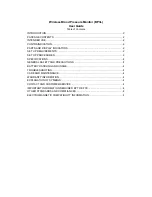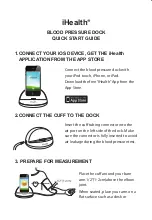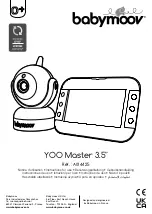
after the measurement with the symbol
. This can be an
indicator for arrhythmia. Arrhythmia is an illness in which the
heart rhythm is abnormal because of flaws in the bioelectrical
system that regulates the heartbeat. The symptoms (skipped
or premature heart beats, pulse being slow or too fast) can
be caused by factors such as heart disease, age, physical
make-up, excess stimulants, stress or lack of sleep. Arrhyth-
mia can only be determined through an examination by your
doctor. If the symbol
is shown on the display after the
measurement has been taken, repeat the measurement.
Please ensure that you rest for 5 minutes beforehand and do
not speak or move during the measurement. If the symbol
appears frequently, please consult your doctor. Self-
diagnosis and treatment based on the measurements can be
dangerous. Always follow your GP’s instructions.
Risk indicator:
The measurements can be classified and evaluated in ac-
cordance with the following table.
However, these standard values serve only as a general
guideline, as the individual blood pressure varies in different
people and different age groups etc.
It is important to consult your doctor regularly for advice.
Your doctor will tell you your individual values for normal
blood pressure as well as the value above which your blood
pressure is classified as dangerous.
The bar chart on the display and the scale on the unit show
which category the recorded blood pressure values fall into.
If the values of systole and diastole fall into two different
categories (e.g. systole in the High normal category and
diastole in the Normal category), the graphical classification
on the device always shows the higher category; for the
example given this would be High normal.
Blood pressure
value category
Systole
(in mmHg)
Diastole
(in mmHg)
Action
Setting 3:
severe
hypertension
≥ 180
≥ 110
seek medical
attention
Setting 2:
moderate
hypertension
160 – 179 100 – 109
seek medical
attention
Setting 1:
mild
hypertension
140 – 159 90 – 99
regular monito-
ring by doctor
High normal
130 – 139 85 – 89
regular monito-
ring by doctor
Normal
120 – 129 80 – 84
self-monitoring
Optimal
< 120
< 80
self-monitoring
Source: WHO, 1999 (World Health Organization)
Measuring the resting indicator (using the HSD diagnosis)
The most frequent error made when measuring blood pres-
sure is taking the measurement when not at rest (haemo-
dynamic stability), which means that both the systolic and
the diastolic blood pressures are distorted. While measuring
the blood pressure, the device automatically determines
whether you are at rest or not. If there is no indication that
your circulatory system is not sufficiently at rest, the symbol
1
2
(haemodynamic stability) is displayed and the measure-
ment can be recorded as a reliable resting blood pressure
value.
1
2
Haemodynamic stability
Measurement of the systolic and diastolic pressure is in-
creased when the circulatory system is sufficiently at rest
and is a very reliable indicator of resting blood pressure.
However, if there is an indication that the circulatory system
is not sufficiently at rest (haemodynamic instability), the
symbol
1
2
is displayed. In this case, the measurement
should be repeated after a period of physical and mental
rest. The blood pressure measurement must be taken when
the patient is physically and mentally rested, as it will be the
basis for diagnosing the blood pressure level and regulating
the patient’s medical treatment.
1
2
Lack of haemodynamic stability
It is very probable that the systolic and diastolic blood pres-
sures have not been measured whilst the patient is at rest
and the resting blood pressure measurement has therefore
been distorted. Repeat the measurement after a rest and
relaxation period of at least five minutes. Go to a sufficiently
quiet and comfortable spot and remain there calmly; close
your eyes, breathe deeply and evenly and try to relax. If the
next measurement also shows insufficient stability, you can
repeat the measurement after another resting period. If the
measurements continue to show some instability, identify
these blood pressure measurements as having been taken
when the circulatory system had not been sufficiently re-
sted. In this case, nervousness or inner anxiety may be the
cause and this cannot be cured by brief periods of rest. Exi-
sting cardiac arrhythmias may also prevent a stable blood
pressure measurement. A lack of resting blood pressure can
have various causes, such as physical or mental strain or
distraction, speaking or experiencing cardiac arrhythmias
during the measurement. In an overwhelming number of
cases, the HSD diagnosis will give a very good guide as
to whether the circulatory system is rested when taking
the measurement. Certain patients suffering from cardiac
arrhythmia or chronic mental conditions can remain hae-
modynamically unstable in the long-term, something which
28
29















































